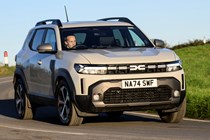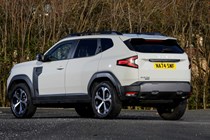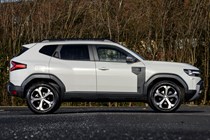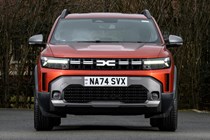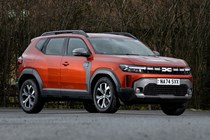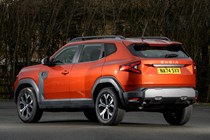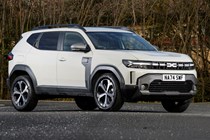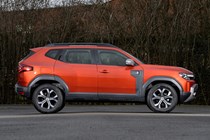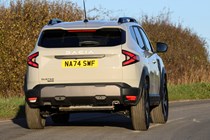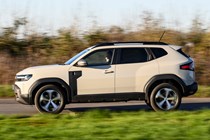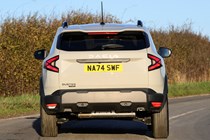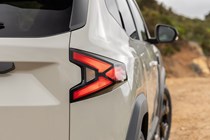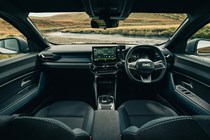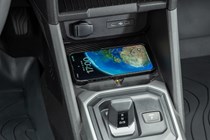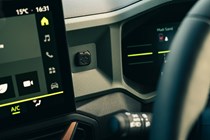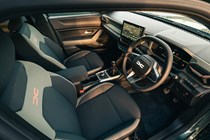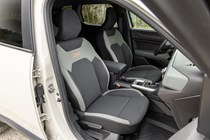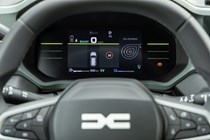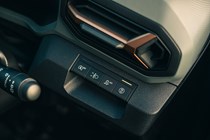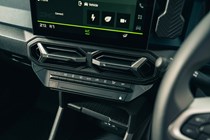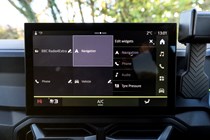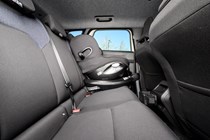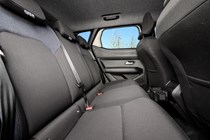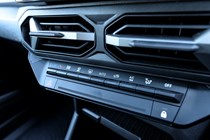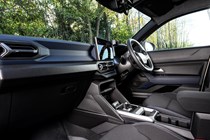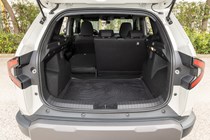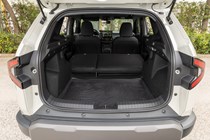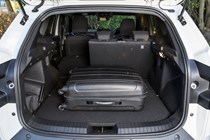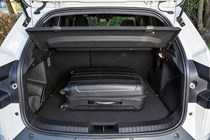Dacia Duster engines, drive and performance
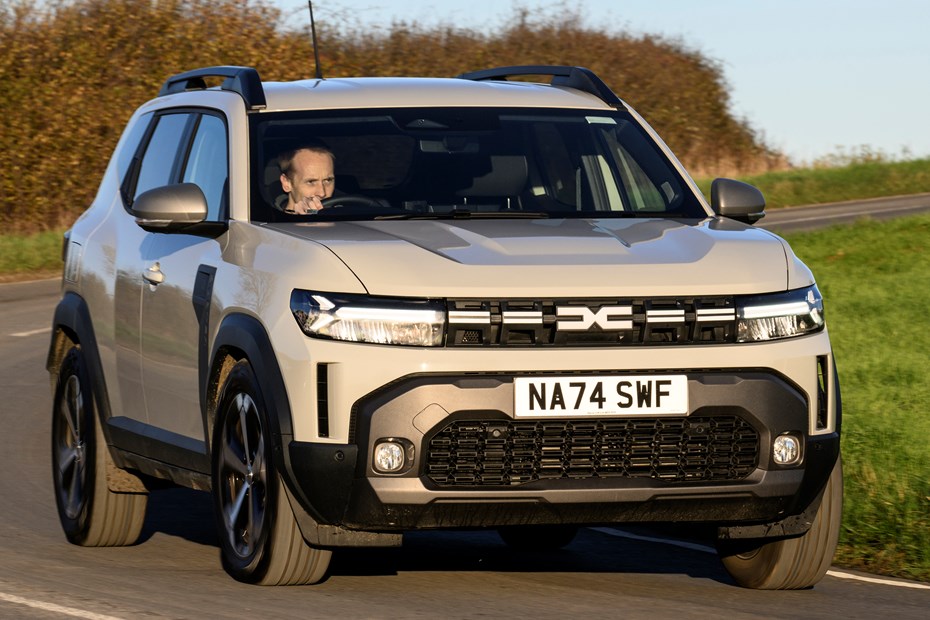
- Just two engine options… for now
- No diesels offered
- Not the last word in refinement
Petrol engine
There’s one choice of pure petrol engine in the UK – a 130hp 1.2-litre three-cylinder mild-hybrid option named TCe 130. This engine is coupled to a six-speed manual gearbox only, but can be had with either two- or four-wheel drive, which is a rarity in this class.
The engine itself feels like more than enough for the Duster’s needs, given it’s actually a relatively light car. Acceleration is good, with a 0-62mph time of 9.6 seconds, but seems to come all at once in a small lump, rather than progress smoothly as you gain speed. It’s also an odd-sounding engine – while hushed at low revs, it can buzz quite a lot when revved.
It’s also a disadvantage that your only gearbox option here is a six-speed manual. The manual is sufficient enough to use with reasonably spaced gears, but can feel a little notchy to shift. That said, this is your only option if you want a four-wheel drive Duster.
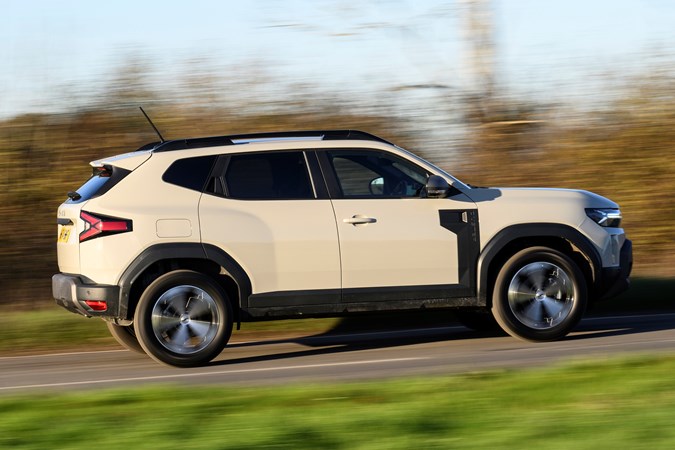
Hybrid engine
The other option for the UK market is the hybrid – a new option for the Duster, if not new for Dacia or its parent company Renault. The Hybrid 140 engine has already seen use in the Jogger as well as Renault models like the Clio, Captur and Arkana. It includes a 1.6-litre four-cylinder engine, battery and electric motor mixed together and this is your only way to get an automatic Duster.
During our time with the car, the Hybrid model accelerated smoothly with a near-identical 0-62mph time to the 1.2-litre petrol (9.8 vs 9.6 seconds). It majors on efficiency, delivering good fuel economy in testing. The powertrain tries to stay in electric mode as much as it can, particularly when driving in towns and cities. This makes the hybrid the one to have if you’re primarily using it for shorter runs, especially as the potential fuel consumption is so good.
But it can be unpredictably noisy when the engine cuts in, with high revs noisily intruding into the cabin at seemingly random times – although it’s better than some other E-Tech models we tested. It can be quite rough at idle, sending an unpleasant vibration through the steering wheel. This wouldn’t be such an issue, if it weren’t for the rival MG ZS’s smoother powertrain and better transition between battery power and petrol.
What’s it like to drive?
- Soft ride and excellent steering
- Lots of bodyroll in bends
- Lack of grip in poor conditions
Jump into the Duster after driving the previous-generation model, and it feels a lot more grown up and contemporary. However, once you get driving, and a few rough edges in the way it drives become apparent. But let’s get to the positives first, as there are many.
The steering is light and easy to use, though you grip an oddly hexagonally-shaped steering wheel, and weights up nicely as you gain speed. Cornering is safe and composed, with accurate handling that won’t challenge drivers – there’s a fair amount of bodyroll in bends, but it always feels controlled. We noticed a lack of grip in the wet, but it could do with a touch more grip from the tyres.
What really impresses is the ride quality – a big improvement over other cars in Dacia’s range. The suspension handles bumps very well, even if you choose a model with large alloy wheels – including over potholes or bridge expansion joints. On the motorway, it cruises reasonably well, although the car’s boxy design results in a fair amount of wind noise. Finally, it can also be unsettled by strong crosswinds, but not worryingly so.

What’s it like off-road?
Dacia’s decision to continue to offer a 4x4 version really plays to the model’s strength. As well as new drive modes via a dial on the centre console (mud/sand, snow and off-road that locks power deliver to 50/50 front/rear), 4x4 models are slightly taller and benefit from impressive approach and departure angles.
Off-road tech in the higher models includes a front camera to see over steep hill crests and, with the manual gearbox, engaging a gear will allow the car to crawl over terrain and climb hills without stalling. The 2024 Duster can even descend hills in neutral, as the car’s tech will allow it to crawl down certain slopes at 3mph when out of gear.
We experienced a trickier-than-expected off-road course during our time with the Duster and, while we were guided with a pro in the passenger seat, the Duster handled it all easily. It’s a shame that so few Duster owners will use its off-road prowess beyond driving up the odd dusty track.


